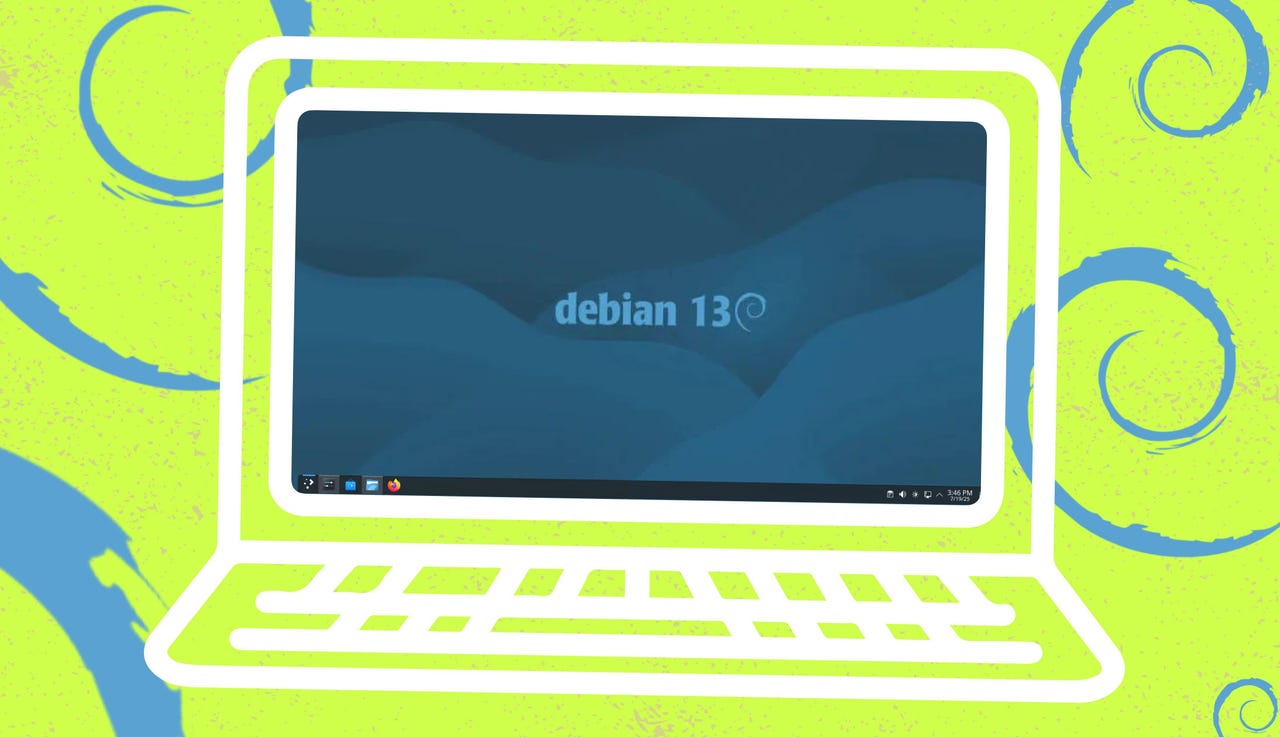
ZDNET’s key takeaways
- The latest Debian Linux comes with multiple improvements.
- Debian will no longer support old 32-bit x86 architectures.
- Debian supports essentially all Linux desktop interfaces.
Debian Linux is everywhere. Debian may only be ranked fifth on the DistroWatch list of Linux distributions, but other Linux distros, such as Mint, MX Linux, and Ubuntu, are built on its strong foundation.
The latest release, Debian 13, codenamed Trixie, released on Aug. 9.
What’s new with Trixie?
This latest version features numerous updates and introduces some notable changes. Perhaps the one alteration that will hit old-time Linux users the hardest is that Debian will no longer support the 32-bit x86 architecture.
Also: 10 Linux features you should be using to get the best performance and functionality
This change comes as no surprise. After all, Linus Torvalds bid adieu to the i386 CPU way back in 2012, saying, “I’m not sentimental. Good riddance,” got rid of floppy drives in 2019, and dropped 32-bit support from the Linux kernel with the end of 486 and early Pentium processors earlier in 2025.
If you want to run Linux on ancient hardware, Debian won’t help you going forward. Instead, you’ll need to, as Torvalds has said, “run museum kernels.”
Also: 8 ways I quickly leveled up my Linux skills – and you can too
Debian developers have also fixed a bug dating back to 2003 in this release. When an operating system is 31 years old — more than old enough to drink, vote, and get a driver’s license — these kinds of things can happen.
However, Trixie will officially support the newish RISC-V (riscv64) architecture. The new version also ships with Linux kernel 6.12. This shift is a major update from Debian 12, Bookworm’s December 2022 vintage 6.1.27 Linux kernel.
This release also features updated programming languages, including Python 3.13, PHP 8.4, PostgreSQL 17, GCC 14.2, and glibc 2.41. However, the Debian infrastructure still has trouble with rebuilding packages that systematically use static linking. In practice, that issue means the Go and Rust ecosystems will be covered by limited security support for now.
For web browsers, Debian recommends and comes with Firefox and Chromium. However, while you can run other web browsers, Debian notes, “The high rate of vulnerabilities and partial lack of upstream support in the form of long-term branches make it very difficult to support these browsers and engines with backported security fixes.” So, take care running other browsers.
Also: The 5 most customizable Linux desktop environments – when you want it your way
Debian comes with two major supported desktops: GNOME 48 and KDE Plasma 6.3. It also basically supports all other major Linux desktop interfaces.
GNOME 48’s most noteworthy feature is that its dual Wayland and X11 screen compositor, Mutter, now supports dynamic triple buffering. This support means that whether you have a top-of-the-line Nvidia GeForce RTX 5090 or a low-end PC with integrated graphics, you’ll still get significantly smoother animations, noticeably fewer dropped frames, and more fluid transitions.
On the KDE side, the interface’s fractional scaling works much better. That means if you have a high-dots-per-inch (DPI) monitor, your display will look better.
This release also ships with a new “Cereratopsian” theme. This is an attractive, organic look based on Trixie, the Toy Story triceratops.
Also: Think Linux desktop market share isn’t over 6%? This 15 million-system scan says otherwise
Behind the scenes, Apt 3.0, Debian’s default software package installation program, now comes with colored output, a new signature verification backend (Sequoia), apt-key deprecation, and simplified source management via the .sources DEB822 format. The result is that package operations are safer and more intuitive. The once-controversial /usr merge is now complete.
The latest Debian also boasts such security enhancements as support for Control-flow Enforcement Technology (CET), Pointer Authentication Codes (PAC), and Branch Target Identification (BTI). On compatible CPUs, Debian provides mitigations for Return-Oriented Programming (ROP)-based exploits, which are increasingly common attacks.
Under the hood, the temporary files directory (/tmp) now resides on tmpfs by default. Confused? Don’t be. All you need to know is that it will make reading and writing to storage and your computer faster.
Want to check out Trixie?
You can download Debian 13 in multiple formats if you’re currently using a Linux distribution based on Debian.
Also: 5 Linux distros I recommend to help businesses cut costs and boost security
Other distributions, such as Tails 7.0 RC1 and Gnoppix AI Linux 25_8, and more mainstream distributions, including Mint and Ubuntu, will incorporate the latest Debian in their next major releases.
